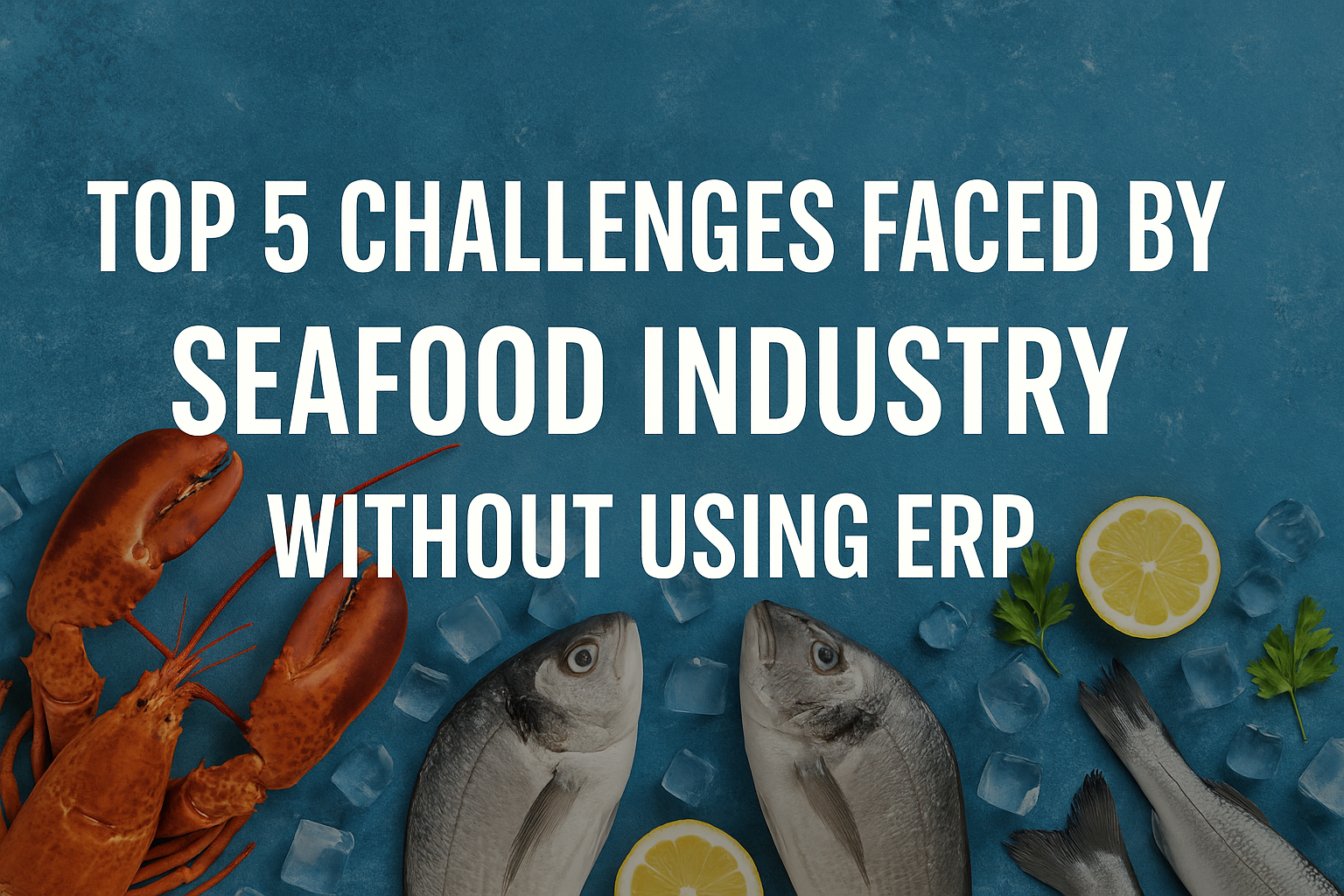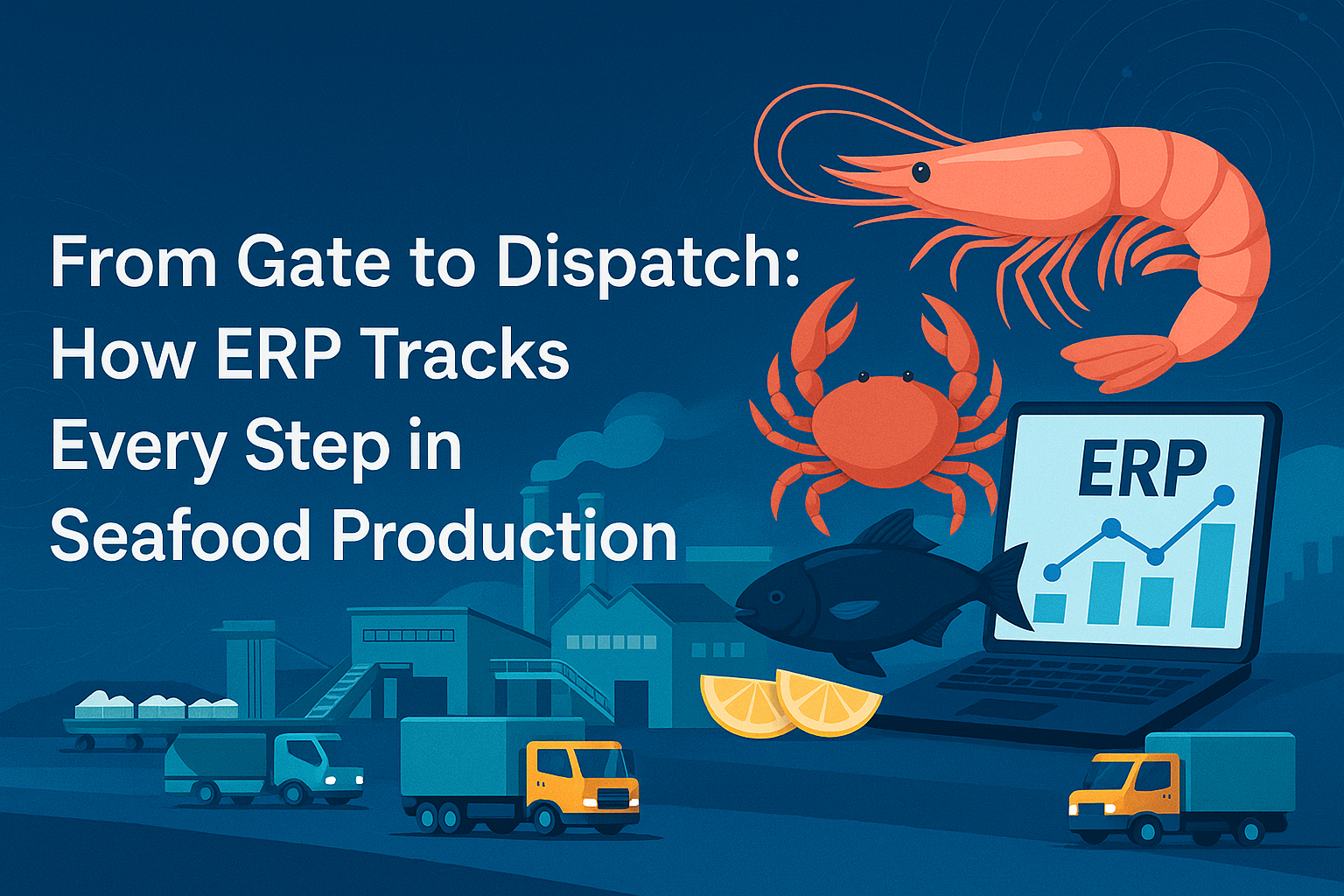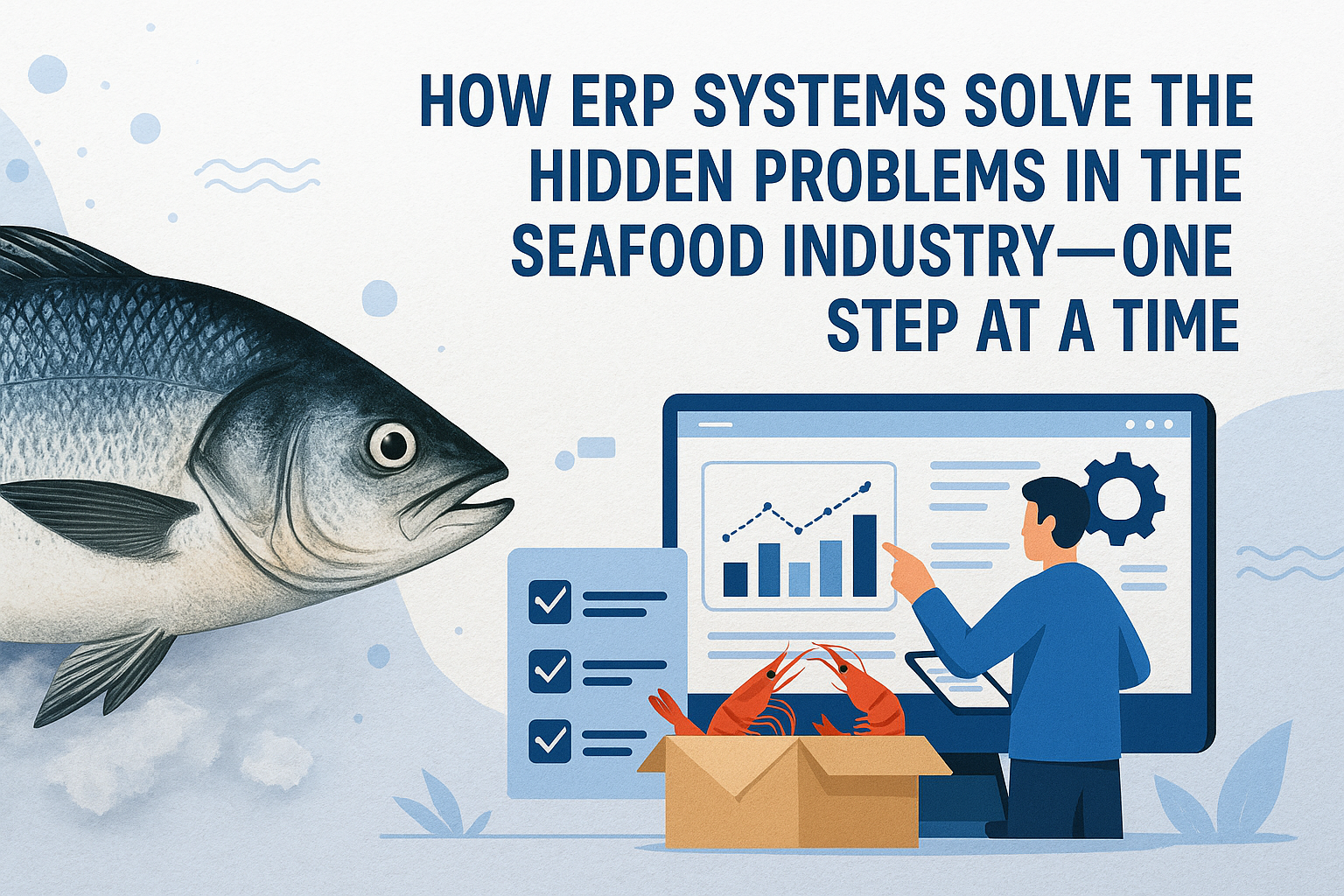
- By Umesh Dudule
- June 11, 2025
- No Comments
The seafood industry is a fascinating blend of tradition, speed, and complexity. From the docks to deep freezers, every step matters. But while the hustle is visible, the daily struggles behind the scenes often go unnoticed. Especially when operations are run manually or across scattered systems, problems are accepted as “normal” and considered as just part of the job.
Here are 5 major challenges seafood businesses face:
1. A Naturally Complex Business Model
Seafood is anything but straightforward. You don’t just catch and sell. Procurement happens in seasonal bursts. Stock is frozen, sometimes for months or even years and sales depend on market timing, not daily orders. Managing all this means keeping tabs on quality, origin, price, and shelf life all at once. Without a clear, connected system, it’s easy to miss something important.
2. Inventory Chaos: What’s Inside the Cold Storage?
Everyone knows in the business that the cold storage is where things get tricky. You’ve got stock from different suppliers, stored for different clients, with different quality levels, all piled together. But who really knows what’s stored where, what’s close to expiry, or what’s already committed? Most of the time, it’s just a few experienced staff who keep it all in their heads. And when they’re away or something slips? That’s when mistakes show up usually through a customer complaint or a missed order.
3. No Clear View, Just Constant Catch-Up
There’s rarely one place to see everything at once. The day starts with phone calls, ends in paperwork, and runs on guesswork in between. Teams like finance, dispatch, and sales all work hard but rarely together. Everyone’s doing their bit, but no one sees the whole picture. That’s how small miscommunications turn into big mistakes.
4. Human Dependency Leads to Risk and Leakage
In many setups, everything depends on people, not processes. From handwritten bills to verbal approvals, it’s all about trust. But when systems rely only on trust—errors, delays, or even manipulation can go unnoticed. One small miss can have a big cost, and without data or visibility, there’s no easy way to trace or fix it.
5. One Decision Maker, Too Many Decisions
In most seafood businesses, especially family-run ones almost every decision ends up on the founder’s desk. Whether it’s supplier pricing or solving a dispatch issue, it all flows through one person. While that ensures control, it also creates bottlenecks. Small tasks pile up, and no one else is empowered to move things forward. That makes scaling up really hard.
It’s Not About Blame—It’s About Bandwidth
None of this happens overnight. These issues creep in slowly until they feel “normal.” But just because something’s always been done a certain way doesn’t mean it has to stay that way. Do you know there’s a big difference between working hard and working smart ?. This isn’t about replacing people. It’s about giving them the tools to do their best without constantly firefighting.
The good news? Those tools exist. One of most commonly used tool is Unify the seafood ERP and it built to support but not to disrupt . IT is very easy to eliminate errors and increase ROI.











